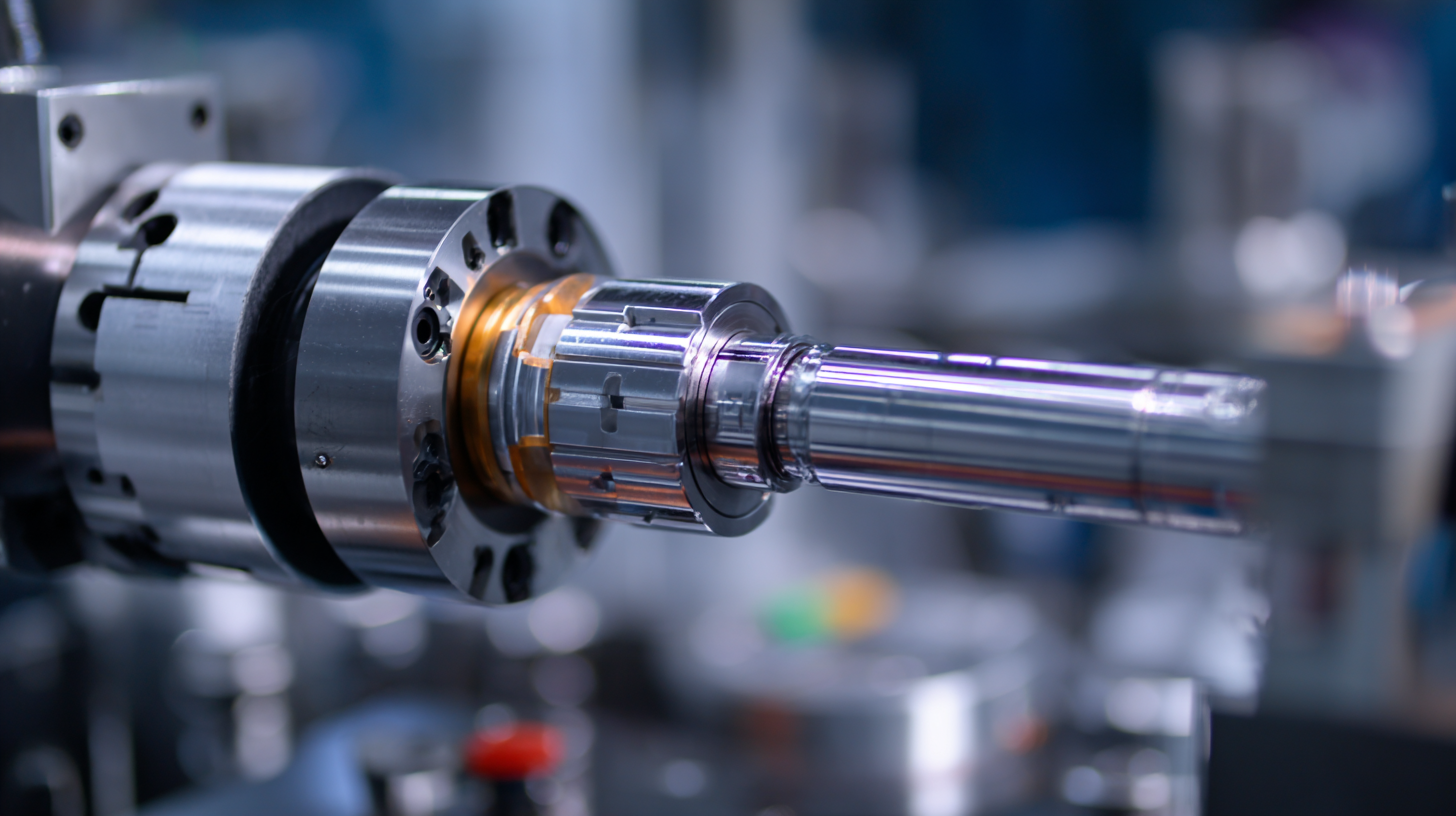Best Video Endoscope Quality Manufacturing in China for Global Export
In recent years, the demand for Video Endoscopes has surged exponentially, driven by advancements in medical technology and an increasing prevalence of minimally invasive surgical procedures. According to a report by Grand View Research, the global video endoscopy market is expected to reach USD 36.59 billion by 2025, growing at a CAGR of 5.1%. As the technology continues to evolve, manufacturers in China are poised to capitalize on this growth by enhancing their production capabilities and ensuring high-quality exports. The integration of 4K imaging, artificial intelligence, and telemedicine features has set the stage for a new era in diagnostic procedures. This blog will explore the technological trends shaping the video endoscope industry leading up to 2025 and provide insights into how companies can adapt to remain competitive in the global market.

The Importance of Quality in Video Endoscope Manufacturing
In the realm of medical devices, the quality of video endoscopes is paramount, as these instruments play a crucial role in diagnostics and minimally invasive procedures. According to a report by MarketsandMarkets, the global endoscope market is projected to reach USD 41.6 billion by 2026, with an increasing demand for high-definition imaging and advanced functionality. These demands necessitate stringent quality control processes in manufacturing, particularly in leading production hubs like China.
The importance of quality in video endoscope manufacturing cannot be overstated. High-quality materials and production practices are essential to ensure the reliability and effectiveness of these devices. The failure rates associated with low-quality endoscopes can lead to misdiagnoses and increased medical costs, emphasizing the need for rigorous testing and certification. A study published in the Journal of Clinical Gastroenterology highlighted that up to 12% of endoscopes failed during procedures, primarily due to manufacturing defects. This underscores the necessity for manufacturers to adhere to international standards and continuously improve their processes, ensuring that only the best products reach the global market.
Quality Comparison of Video Endoscopes Manufactured in China
China's Role in the Global Market for Medical Technology
China has emerged as a dominant player in the global medical technology market, particularly in the manufacturing of video endoscopes. According to a report by Grand View Research, the global endoscope market was valued at approximately $32 billion in 2022 and is expected to expand at a compound annual growth rate (CAGR) of 7.2% through 2030. China's ability to produce high-quality and cost-effective medical devices positions it as a key exporter to various countries, fulfilling the growing demand for advanced medical equipment.

Tips for Choosing Quality Endoscopes: When selecting video endoscopes, consider the manufacturer’s certifications and quality control processes. It is crucial to verify if the production facility meets international standards such as ISO 13485, which ensures quality management systems for medical devices. Furthermore, understand the after-sales support and warranties, as these can be indicators of a manufacturer’s confidence in their product quality.
As China continues to innovate in the medical technology sector, its contributions are critical for global health advancements. A significant portion of video endoscopes exported comes from Chinese manufacturers, who leverage cutting-edge research and development capabilities. This growth not only enhances their competitive edge but also fulfills an essential role in meeting the healthcare needs of various populations worldwide.
Tips for Exporting Medical Devices: When considering export opportunities, ensure compliance with the regulatory requirements of the target markets. Research the specific certification and documentation required by countries such as the USA and EU nations to facilitate smooth entry into these markets.
Key Features to Look for in Video Endoscopes
When searching for high-quality video endoscopes, especially those manufactured in China for global export, identifying key features is crucial for ensuring optimal performance and reliability. According to a recent report by MarketsandMarkets, the global endoscopy market is expected to reach $41.5 billion by 2025, highlighting the increasing demand for advanced imaging technologies across various medical fields. Therefore, buyers should prioritize endoscopes equipped with high-resolution imaging capabilities, such as HD or 4K video quality, to ensure clear and accurate diagnostics.
Another vital feature to consider is the endoscope's flexibility and maneuverability. A study conducted by ResearchAndMarkets indicates that the proficiency and comfort of use are closely tied to the design of the endoscope, particularly its diameter and length. Endoscopes that utilize advanced materials for both the lens and housing not only enhance maneuverability but also improve patient comfort during procedures. Additionally, look for models with superior lighting systems that facilitate better visualization in deep or dark areas of the body, which can significantly impact diagnostic outcomes. With these critical features in mind, healthcare professionals can make informed decisions when selecting video endoscopes tailored to their needs.
Best Video Endoscope Quality Manufacturing in China for Global Export - Key Features to Look for in Video Endoscopes
| Feature | Description | Importance | Manufacturing Standard |
|---|---|---|---|
| Camera Resolution | High-definition imaging for clear visualization | Essential for accurate diagnosis | ISO 13485 Certification |
| Flexibility | Ability to navigate through difficult passages | Critical for various medical procedures | FDA Compliance |
| Light Source | Integrated LED or cold light source for optimal visibility | Important for effective examination | CE Marking |
| Ergonomic Design | User-friendly interface and lightweight construction | Enhances usability for medical staff | Quality Assurance Processes |
| Durability | Robust construction to withstand medical environments | Reduces maintenance costs | Material Safety Standards |
| Image Storage | Ability to store and transfer images easily | Facilitates follow-up and record-keeping | Data Protection Compliance |
Innovative Manufacturing Techniques in China's Endoscope Production
 China has established itself as a leader in the production of video endoscopes through the adoption of innovative manufacturing techniques that meet the demands of global markets. The incorporation of advanced technology, such as automation and artificial intelligence, has revolutionized the production process. By utilizing state-of-the-art machinery, manufacturers can achieve higher precision and efficiency, resulting in endoscopes with exceptional image quality and reliability. This is especially critical in the medical field, where accuracy can significantly impact patient outcomes.
China has established itself as a leader in the production of video endoscopes through the adoption of innovative manufacturing techniques that meet the demands of global markets. The incorporation of advanced technology, such as automation and artificial intelligence, has revolutionized the production process. By utilizing state-of-the-art machinery, manufacturers can achieve higher precision and efficiency, resulting in endoscopes with exceptional image quality and reliability. This is especially critical in the medical field, where accuracy can significantly impact patient outcomes.
Moreover, the emphasis on research and development has allowed Chinese manufacturers to stay at the forefront of industry advancements. Continuous investment in R&D cultivates a culture of innovation, leading to the development of next-generation endoscopes that feature enhanced ergonomic designs and user-friendly interfaces. This focus on improvement not only enhances the product offering but also positions China as a key player capable of meeting the increasing global demand for high-quality medical devices. As a result, the combination of innovative manufacturing techniques and commitment to excellence ensures that China's video endoscope production remains unmatched on the world stage.
Ensuring Compliance and Quality Control for Global Exports
In the rapidly evolving field of medical technology, ensuring compliance and quality control in the manufacturing of video endoscopes is paramount for global exports.
Manufacturers in China are increasingly adopting stringent quality management systems to meet international standards, such as ISO 13485 and CE marking. This not only helps in adhering to regulatory requirements but also fosters trust among international clients who prioritize safety and effectiveness in medical devices.
To achieve excellence, manufacturers implement robust quality control measures throughout the production process. This includes regular inspections, rigorous testing procedures, and continuous staff training to keep pace with the latest technological advancements. By investing in state-of-the-art equipment and fostering a culture of quality, these manufacturers can ensure that every video endoscope produced meets the highest standards of reliability and performance.
As a result, they can confidently export their products to global markets, bridging the gap between innovation and healthcare needs worldwide.

